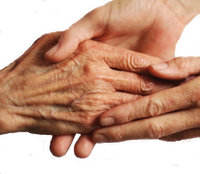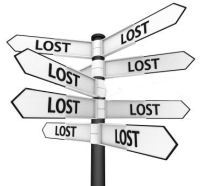Peace of Mind Devices
Index Uses of trackers Safety of People
Safety of People

A GPS2Find tracker can provide "peace of mind" about the current location of a vulnerable family member, possibly leading to their rescue if lost. Trackers allow Seniors to extend their time living independently.
Finding a suitable tracker: It is hard to find a suitably small and unobtrusive GPS tracker for most situations.
It may have to attach to the clothing of someone who has a tendency to wander and get into unsafe situations. Tracker size is the enemy of battery life.
The time that a tracker stays charged depends on physical size. Long battery life means a bigger battery.
Newer models use power more efficiently and offer a number of energy conserving modes of use.
Care Visitors or family members may have to charge the tracker. Battery life depends on: how frequently it reports; how much time it's moving; how far indoors it is; how strong the satellite signal reception is, etc.
Generally, the smaller a tracker is, the more frequently it will need to be re-charged.
Level of co-operation: The degree of co-operation of the person needing the tracker (Wearer) matters. Family members need to accept this. GPS watches or pendants suit some, while they may need to be concealed for others.
Trackers often have other functions such as heart monitoring, pedometry and medication reminders.
Ethics: GPS trackers are personal safety devices - pure and simple. There is no moral dilemma - ask someone (e.g. a Garda) who has spent hours driving around hunting for someone. Trackers save lives.
Data Protection: Some trackers collect biometric or other personal data, which identifies the person who is being tracked, and stores this "personal data" in a database. We do not sell these. Our devices do not produce personal data, so data protection does not arise.
Panic button: Most personal tracker models have Panic buttons, which allows a wearer to request help by pressing it for about 3seconds. With many this intiates a phone call, with others an SMS message.


Geo-fence operation: All models are capable of operating a geo-fence/safety zone. These can alert people (e.g. family members) when the Wearer leaves and/or re-enters up to 3 user-defined zones/locations. This can keep particular family members up to date with excursions to and from a home, so they can take action if the Wearer leaves but doesn't return.
Carer interface: There is no limit to the number of Carers who can view the location of the tracker, or its history if they have been given the login details by whoever is administrating the tracker.
Each needs to download the appropriate app onto their mobile phone, or if using a bigger screen device, use the web-app such as: www.trackserver.ie or https://mobile.trackserver.co.uk.
These apps are simple but powerful user interfaces that come included in our product and subscription prices, as is their ongoing evolution and improvement. Our HowTo section explains how these work. We are available to answer enquiries by phone, and online, most of the time.
Operating the tracker: The tracker needs to be switched on and be at least partially charged. Become familiar with your device's battery life.
When a battery's level drops below 20% a "low battery alert" message will be sent to the specified phone number.






